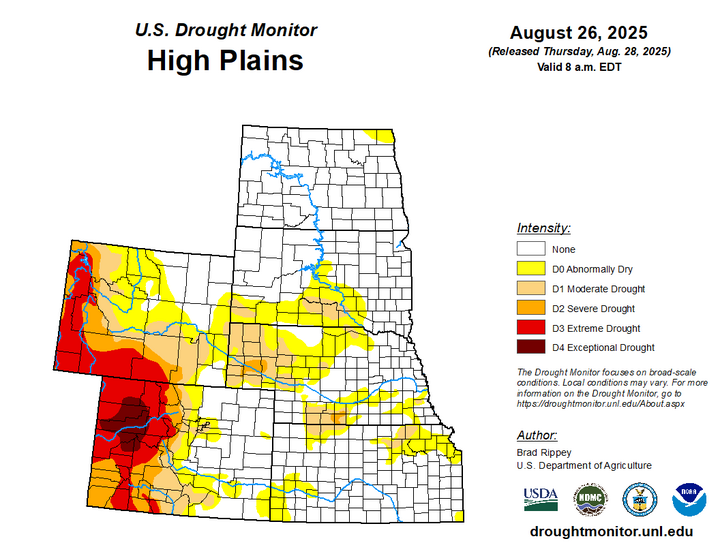Temperature
Temperatures varied in the region. The highest temperatures were 4°F to 6°F above normal in northern North Dakota, with an area reaching 6°F to 8°F above normal. The lowest temperatures were 8°F to 10°F below normal in central and eastern Kansas, with a few areas reaching temperatures greater than 10°F below normal.
Temperatures in northern North Dakota reached 6°F to 9°F above normal. The hottest temperature was 85°F at Grand Forks, North Dakota, which is 7°F above normal for the area. The lowest temperatures were 12°F to 15°F below normal in central and eastern Kansas, with some areas reaching temperatures greater than 15°F below normal.
Temperatures in southcentral North Dakota reached temperatures greater than 10°F below normal. The coldest temperature was 42°F at Laramie, Wyoming, which is 1°F above normal for the area. The highest temperatures were 8°F to 10°F in northwestern Wyoming, with an area reaching temperatures greater than 10°F above normal.

| 
| 
|
Precipitation
Precipitation amounts varied in the region, ranging from 2 percent of normal in most of North Dakota, eastern and southwestern South Dakota, the northwestern corner of the Nebraskan panhandle, and northcentral Wyoming to 800 percent of normal in western South Dakota, central Wyoming, and eastern Colorado. Ransom, Kansas received 6.49 inches of precipitation; most of it fell on the 28th. Drought continues in the region. D0 (abnormally dry) conditions decreased from 45 percent to 44 percent. In the region, South Dakota experienced the highest decrease in D0 conditions by 4 percent and Kansas experienced the highest increase in D0 conditions by 2 percent.

| 
|
Severe Storms
North Dakota and Wyoming received hail 1 inch in diameter. Nebraska and Kansas received hail 1 to 1.25 inches and 1 to 4 inches in diameter, respectively.